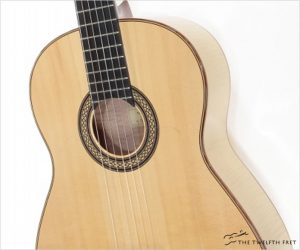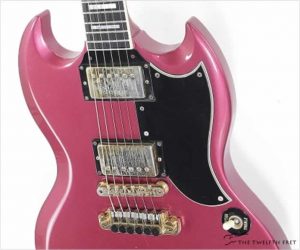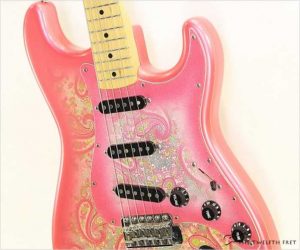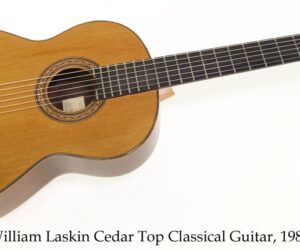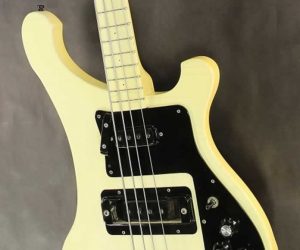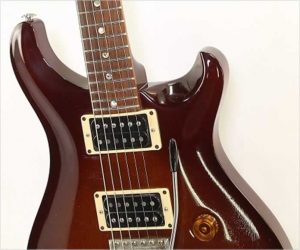Here’s something special! Not a reissue but an original, the Fender Stratocaster Pink Paisley was built in Japan from 1985 to 1987 while Fender had no guitar production in the USA. The Fender Stratocaster Pink Paisley model was unique to this era though during 1968, Fender built a Paisley Telecaster. The finish uses a foil layer on top of the body wood and covered with a polyester sunburst layer. This Fender Stratocaster Pink Paisley model dates to 1987 and was built for Fender Japan by Fuji-Gen at Matsumoto, Nagano. It’s in good clean condition though it has definitely been played, as evidenced by the fingerboard wear.
Vintage
Price: $1,700.00 CAD
$2,150.00 CAD
This instrument has sold
MORE →
